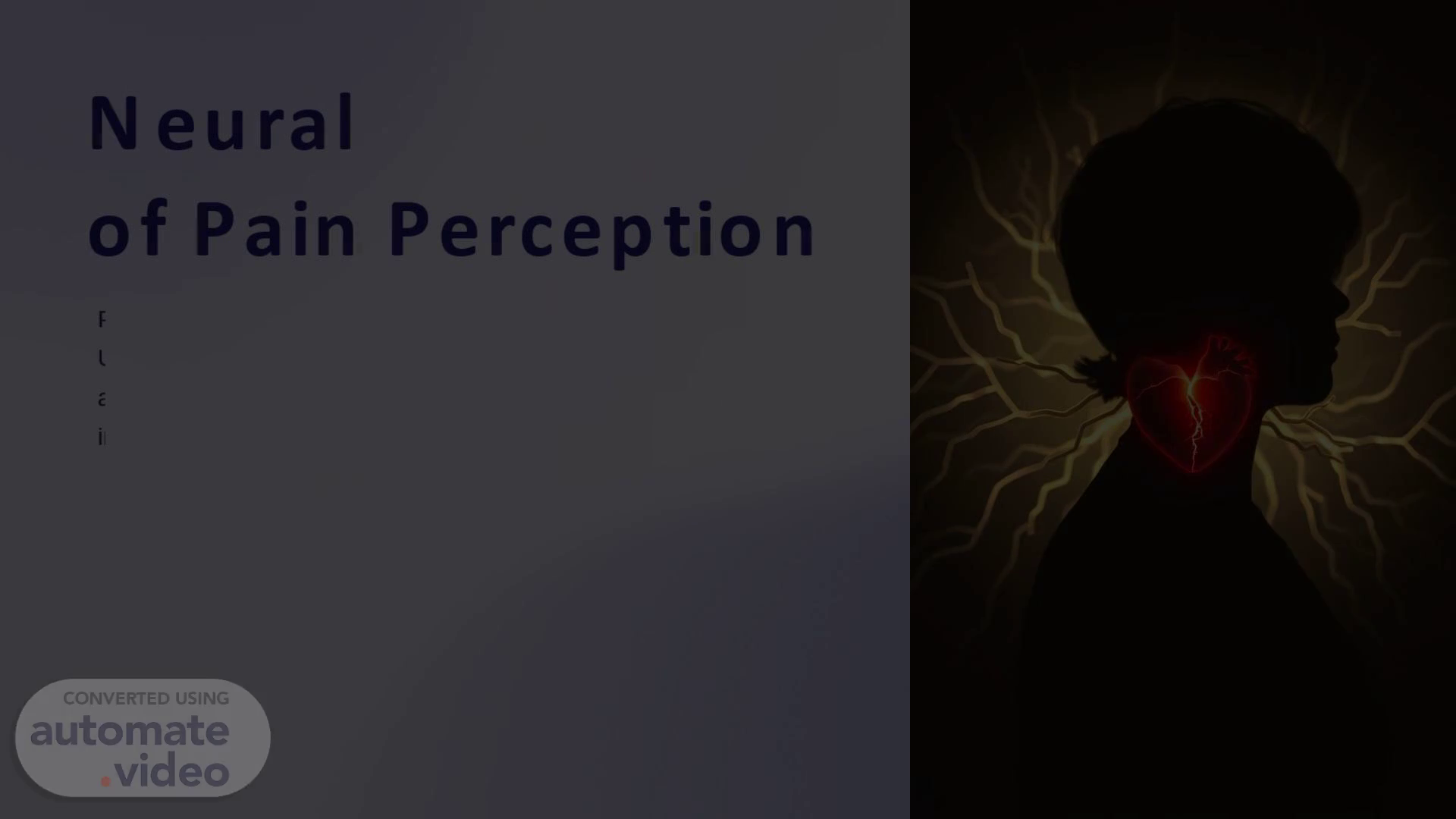Scene 1 (0s)
Pain perception is a complex neurobiological process. Understanding its mechanisms is crucial for medical advancements and pain management strategies. This presentation explores the intricate journey of pain signals through our nervous system..
Scene 2 (19s)
Introduction to Pain Perception. 1. Multifaceted Experience.
Scene 3 (45s)
Stimusus Octfes*ps Wth rectestse, end heoftonng, end erepentntte pluck. Erspocity Codresge •nith heedtarna, tou atld egame pvaci. PAIN Timpuity Codresse Wth re:terage. hect bttmty Uttl Detfecnmut Posplullc Ireret4 Ciectitk you hecsraxtors legrnolfty Inherese tne tncc•tdty buy pea btitng'..
Scene 4 (1m 14s)
Transduction: The Pain Gateway. Nociceptors. These specialized receptors detect potentially harmful stimuli. They respond to mechanical, thermal, and chemical threats..
Scene 5 (1m 35s)
Transmission: The Pain Highway. First-Order Neurons.
Scene 6 (2m 1s)
Perception: The Pain Experience. Thalamic Relay. The thalamus acts as a hub, directing signals to various brain regions. It plays a crucial role in pain localization..
Scene 7 (2m 29s)
Modulation of Pain Signals. 1. Descending Pathways.
Scene 8 (2m 55s)
Emotional and Cognitive Influence on Pain. Brain Regions.
Scene 9 (3m 19s)
Clinical Implications of Pain Mechanisms. Tailored Treatments.
Scene 10 (3m 48s)
Disorders Related to Pain Perception. Chronic Pain Conditions.
Scene 11 (4m 20s)
Advancements in Pain Research. Genetic Insights. Research into pain-related genes is advancing. This could lead to personalized pain management strategies..
Scene 12 (4m 47s)
Summary: The Complexity of Pain Perception. 1. Sensory Input.
